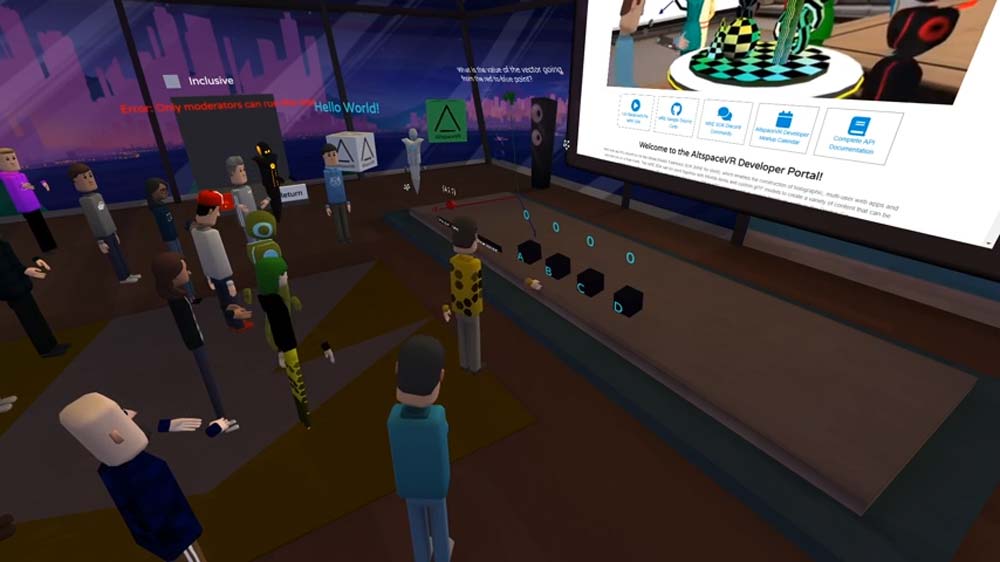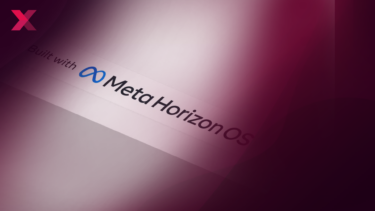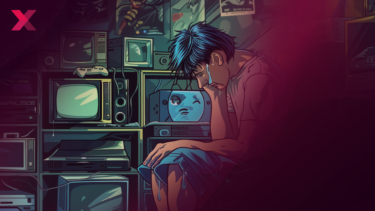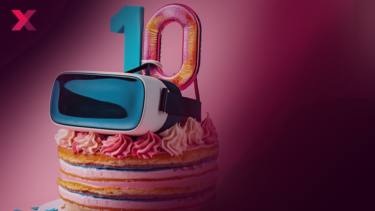Microsoft zieht Entwicklerkonferenz in Virtual Reality um

Update vom 12. Mai:
Microsoft hat das Programm für die Mixed Realiy Dev Days in Altspace VR veröffentlicht. Die Keynote hält Microsofts MR-Chef und Hololens-Projektleiter Alex Kipman. Ein Großteil der Sessions dreht sich wie erwartet um Hololens 2 - das bestätigt, dass Microsofts Mixed-Reality-Strategie derzeit klar auf Augmented Reality fokussiert ist.
[table style="table-striped"]| Time | Session Title | Speaker | Description |
| 9:30am - 10:30am | Fireside Chat | Alex Kipman & Rene Schulte | |
| 10:30am - 11:00am | Break | ||
| 11:00am - 12:00pm | Designing AR/VR experiences using Microsoft Maquette | Ricardo Acosta & Jia Wang | Designing a phone app or a website has a well defined workflow. Unfortunately, due to its novelty designing spatial reality experiences can be tricky if you use the same 2D workflow or toolset. Luckily, the new Microsoft Maquette app focuses on helping UX designers to design. |
| 11:00am - 12:00pm | MRTK Unity v2 & beyond - How community feedback helped us improve MRTK | Bernadette Thalhammer | A talk about how we've improved the developer experience over the last year by listening to feedback from the community and how developers can leverage some these improvements. We will dive into documentation and unit testing, the new object manipulator component, using the migration window and will explore some code snippets around our most frequently asked questions from the dev community. |
| 11:00am - 12:00pm | Dark Slope's Unreal Engine plugin for the Azure Kinect DK | Ben Unsworth - Dark Slope | |
| 12:00pm - 1:00pm | Lunch | ||
| 1:00pm - 2:00pm | Building Data Driven Mixed Reality Applications | Aysegul Yonet | Data Driven Applications give the ability to incorporate data into an application as well as dynamically share real time operations data. When used in Mixed Reality, Data visualizations can enable analysis and insights from the data to help with decision making process in the right place and right context. How Data visualization can help making sense of our data is clear to most of us but how to turn data into useful visualizations and get actionable insights is not a straight forward task. In this talk, we will explore the processes, design decisions as well as technical tools and examples of creating insightful data driven mixed Reality applications. |
| 1:00pm - 2:00pm | Building Immersive MR Experiences with Babylon.js and WebXR | Jason Carter | Discover how easy and powerful it can be to develop MR experiences directly on the web. Babylon.js strives to be one of the most powerful, beautiful, simple, and open web rendering platforms in the world, making it easy to unlock full MR capabilities across platforms, devices, and ecosystems. Come check out the latest developments of Babylon.js and its support of WebXR. |
| 1:00pm - 2:00pm | Using Project Acoustics with HoloLens 2 | Mike Chemistruck | See how Project Acoustics, previously only available for VR and Console titles, can be applied to Mixed Reality! Learn how the system recreates real-world effects such as diffracted occlusion and re-direction of sounds around physical doorways and corners, and reverberation in complex geometries with multiple connected spaces, all within the compute budget of a HoloLens 2. |
| 2:00pm - 2:30pm | Break | ||
| 2:30pm - 3:30pm | Holographic Remoting - Rapid iteration & supercharged graphics on HoloLens | Brent Jackson | HoloLens delivers a revolutionary mobile computing platform like no other, but it?s limited to the processing power of a mobile device. Holographic remoting brings the raw power of a VR capable computer to HoloLens, and with Unity in-editor remoting you no longer have to build and deploy your apps to test them on device. Learn how Holographic remoting can increase the performance of your applications, and your developers. |
| 2:30pm - 3:30pm | OpenXR on HoloLens 2: Cross-platform native mixed reality | Alex Turner | OpenXR 1.0 is here! Are you building mixed reality support into your own engine or native app from the ground up? If so, learn about the key details of the OpenXR native API surface, the extensions that bring the full feature set of HoloLens 2 to life, and the partners from Firefox Reality to StereoKit already shipping apps and frameworks built on OpenXR! With OpenXR, you can build cross-vendor mixed reality engines and native apps that span the breadth of devices in the industry! |
| 2:30pm - 3:30pm | Introducing StereoKit - MR Made Easy! | Nick Klingensmith | StereoKit is an easy-to-use open source mixed reality library for building HoloLens and VR applications with C# and OpenXR! StereoKit prioritizes mixed reality application development above all else, allowing for features such as a first class mixed reality input system, fast performance by default even on mobile devices, quick iteration time on-device, and a runtime asset pipeline that lets users and developers load real assets from the file-system. All of this and more are packaged in a terse API that?s well documented, easy to learn, and easy to write! |
| 2:30pm - 3:30pm | Tips from a Year of HoloLens 2 Development | Peter Vale | The HoloLens commercialization team will share tips and lessons learned from the past year working with our partners. Gain insight into the most common issues along with best practices and techniques that you can use to get your HoloLens 2 application ready to share with your customers. |
Ursprünglicher Artikel vom 10. Mai:
___STEADY_PAYWALL___Microsofts Entwicklerkonferenz für Mixed-Reality-Programmierer wechselt 2020 in VR.
Die eigentlich für den 16. und 17. Mai geplante XR-Entwicklerkonferenz "Mixed Reality Dev Days" an Microsofts Firmenstandort in Redmond findet wegen des Coronavirus nicht statt. Dafür gibt's am 21. und 22. Mai ein virtuelles Entwicklertreffen.
Die Mixed Reality Dev Days ist speziell für die XR-Szene gedacht und ergänzt Microsofts Windows-Konferenz Build. Da Microsoft derzeit wenig mit VR unternimmt - bis auf eine Sharepoint-Version mit Unterstützung für VR-Brillen - liegt der Fokus auf der eigenen AR-Brille Hololens 2 (Ersteindruck).
Microsoft nutzt die eigene VR-Event-Plattform
VR-Austragungsort der Konferenz ist die VR-App AltspaceVR. Hier treffen sich Nutzer als Comic-Avatare verkleidet in einem 3D-Raum.
Die Altspace-Avatare können sich in Gruppen zusammenstellen und, ähnlich wie in der Realität, miteinander sprechen oder wie bei einer klassischen Konferenz auf einer Bühne vortragen und dabei externe Medien streamen, beispielsweise Videos und Präsentationen.
MIXED.de ohne Werbebanner
Zugriff auf mehr als 9.000 Artikel
Kündigung jederzeit online möglich
AltspaceVR läuft sowohl am Monitor als auch mit VR-Brille. Unterstützt werden HTC Vive, Oculus Rift, Go und Quest, Samsung GearVR und Windows Mixed Reality.
Die Registrierung für die Mixed-Reality-Konferenz in AltspaceVR ist kostenlos und hier möglich. Das Programm ist noch nicht bekannt. Unklar ist noch, was aus den für Japan und Deutschland geplanten MR-Entwicklertagen wird.
Microsofts Altspace- und Mixed-Reality-Teams veranstalten bereits regelmäßig Meetups in AltspaceVR. Das folgende Video gibt einen Einblick in ein aktuelles VR-Treffen.
https://www.youtube.com/watch?v=6eH-xbPb7QU
Microsoft kaufte AltsapceVR im Herbst 2017 und rettete das gleichnamige Social-VR-Startup so vor der Firmenpleite. Das VR-Nutzerwachstum war zu langsam für das geplante Geschäftsmodell. Seit der Übernahme wird AltspaceVR unter Microsofts Aufsicht kontinuierlich zu einer Event-Plattform weiterentwickelt.
Im aktuellen MIXED.de Podcast sprechen wir über Erfahrungen und Eindrücke mit VR-Events.
Weiterlesen über Telepräsenz-Apps:
- VR-Meetings: Nur was für Nerds?
- Zoom, Microsoft Teams und Co. – so könnt ihr aus VR moderieren
- Breakroom: Team-App für VR und Monitor gestartet
Hinweis: Links auf Online-Shops in Artikeln können sogenannte Affiliate-Links sein. Wenn ihr über diesen Link einkauft, erhält MIXED.de vom Anbieter eine Provision. Für euch verändert sich der Preis nicht.



